Considered as historical region, Cadore coincides with the upper Piave basin: a completely mountainous territory, with a surface area of 1,427.22 km2, famous for its natural beauty recognized throughout the world.
The etymology of the word Cadore, of pre-Roman origin as Pellegrini states, derives from the Celtic Catu (battle) Brigum (stronghold, high ground).
The different particularities, developed over a thousand-year history, have allowed the growth of diversified artisanal, social and artistic activities which find their valorization in the various museum structures of Cadore.
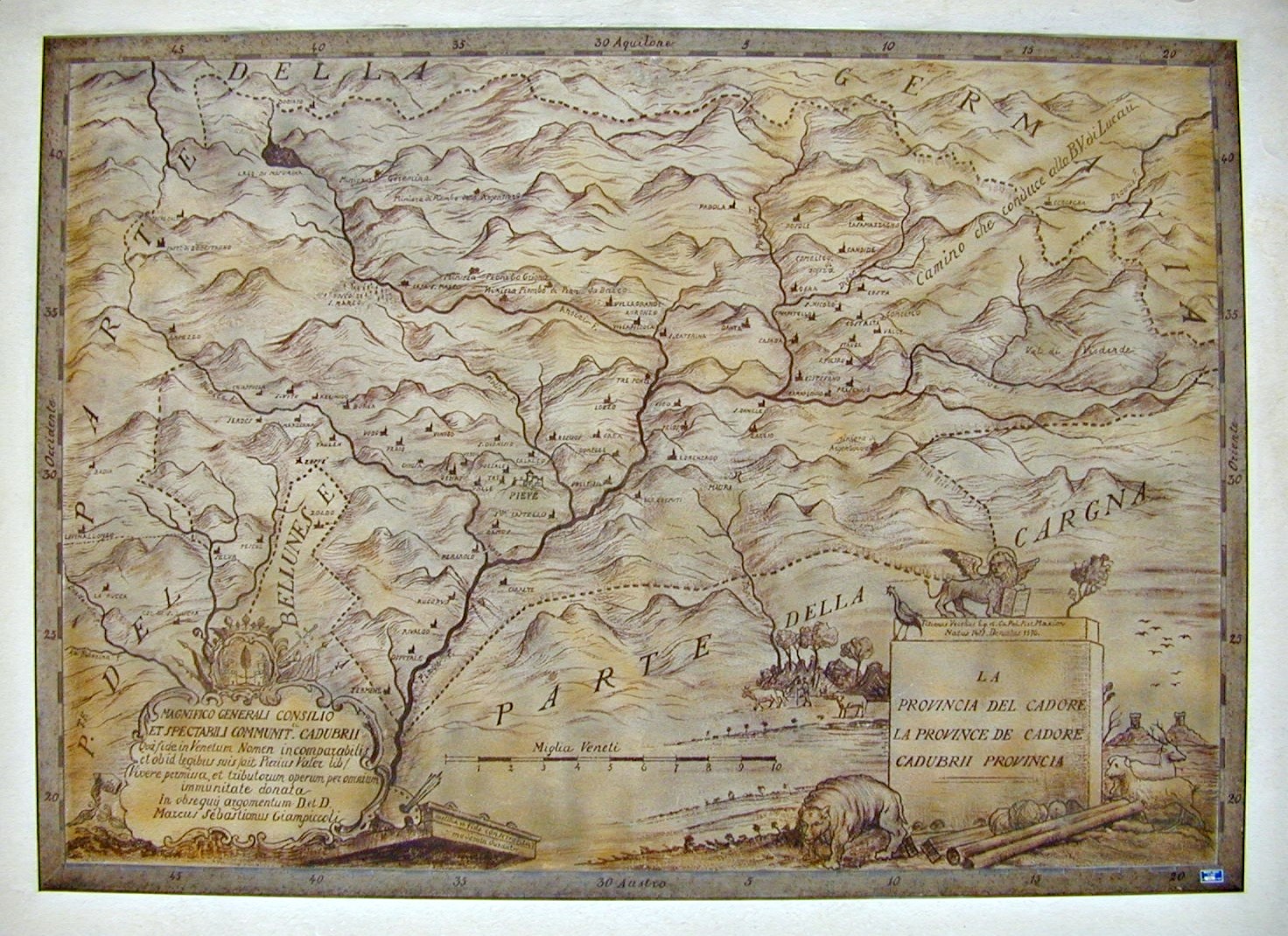

Thirty years after the extraordinary discovery of the prehistoric site of Mondeval de Sora, in the territory of San Vito di Cadore, which occurred thanks to the intuition and research activity of the self-taught scholar Vittorino Cazzetta, the collection that the Museum exhibits represents for the territory Cadorino an extraordinary richness in the prehistoric area.
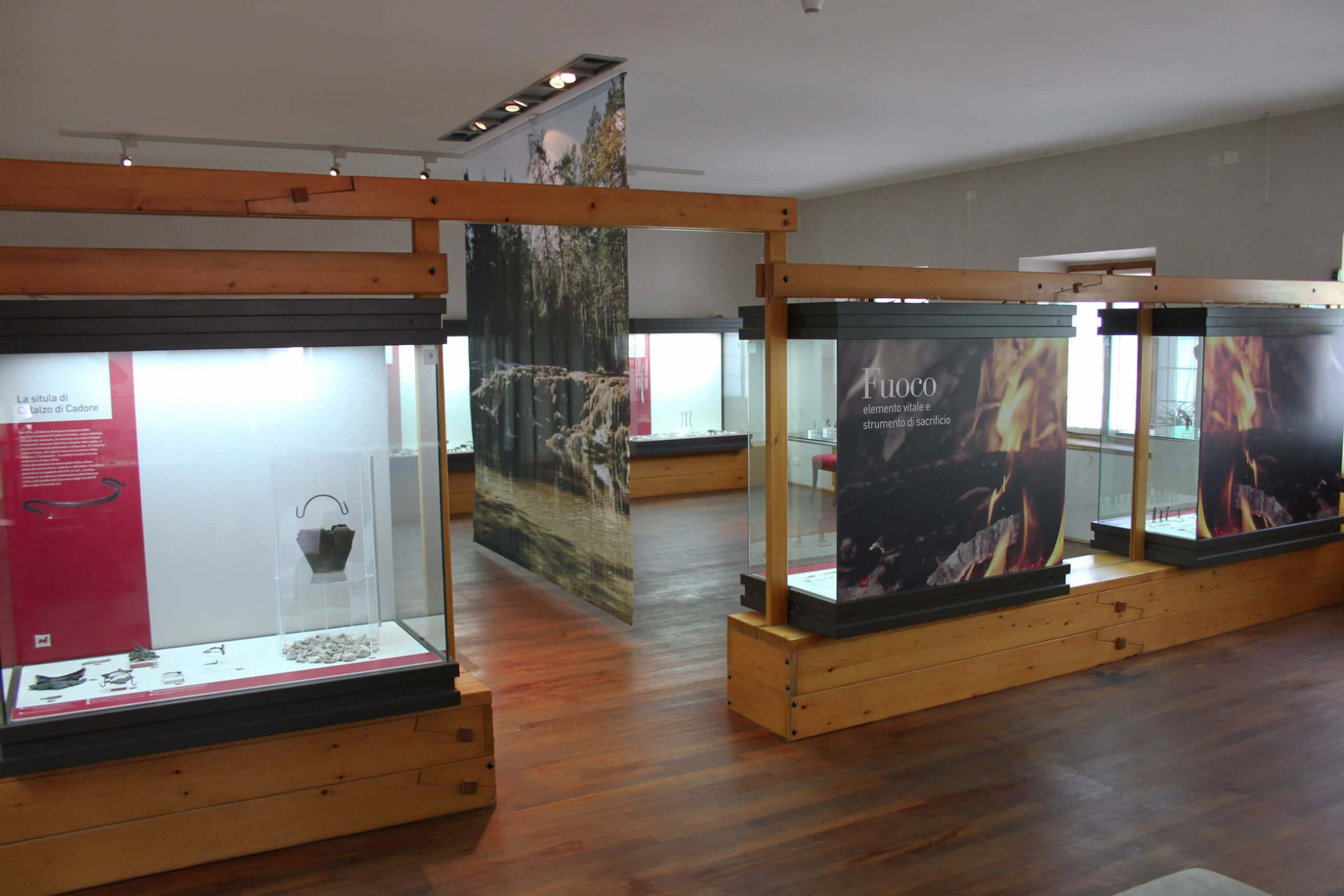
The MARC collection of finds, currently over 3000, are the result of excavation campaigns that took place at the Cadore Centrale sites during the 20th century.
The most important nucleus of finds comes from Làgole (Calalzo di Cadore) where between 1949 and 1952 a votive deposit was discovered with significant figurative finds with Venetian and Latin inscriptions.
The news of these findings had wide resonance in the scientific world, involving scholars of archaeology, glottology, philology and history from the main European and American universities.
Many of these finds are linked to the medicinal properties of the water of the Cadore locality from which the inscriptions dedicated to the local deity Tribusiatu / Trumusiati, often called sainati, were then created. Among the most recurring offerings are the simpula, bronze ladles used for libations or for drinking water. Other types of finds, such as some bronze plates with the depiction of a horse, testify to the role and social position of the offerers. Also significant are a series of miniature statuettes of warriors which underline the strategic importance of the north-eastern route along the Piave. Between the 1960s and 1970s, the museum was enriched by the many discoveries that occurred in the Valle area, on the site of a settlement that was repeatedly subjected to archaeological investigations, on an important crossroads for the local road network: among the materials from the Venetian environment, dating back to between the 5th and 4th centuries. B.C. there are important pieces such as a bronze situla with a votive dedication, basins and simpula handles, which testify to the presence of a sacred area, unfortunately not yet sufficiently investigated.
Also in the Valle area, structures of three rustic complexes from the Roman era were discovered, in two of which the residential part with mosaic rooms and pictorial wall decorations was brought to light.
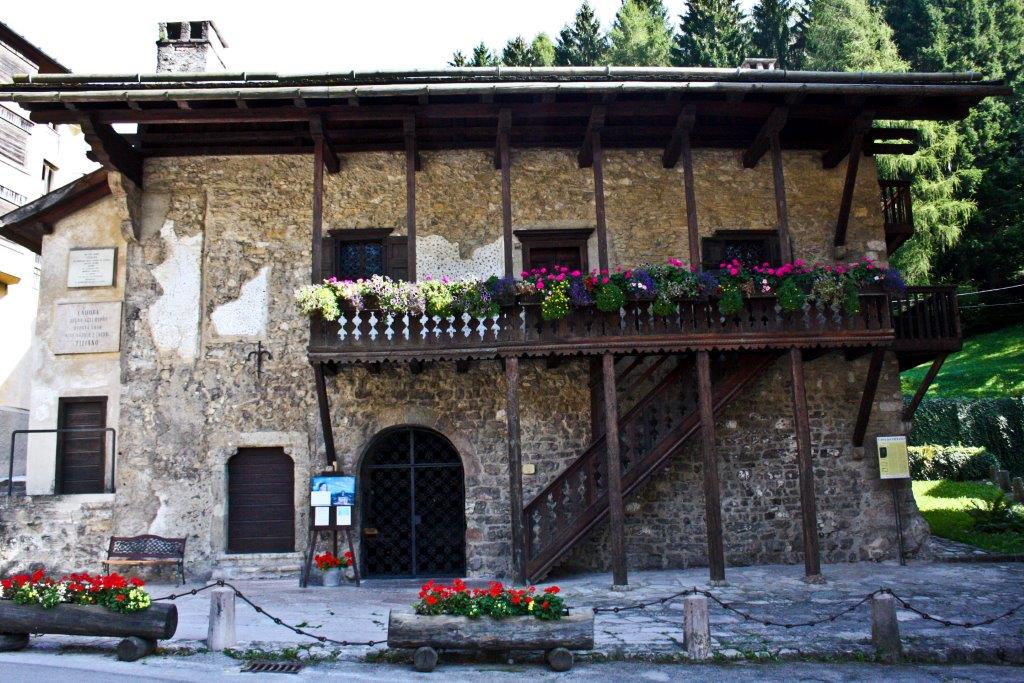
Today the house-museum of Titian, who lived there in his youth before moving to Venice to learn the art of painting, houses within it a collection of color reproductions of the Master’s works, created by the Alinari company of Florence in the 1930s and exhibited on the occasion of the inauguration in August 1932. The house also houses a series of memorabilia of various origins and some reproductions of texts relating to the Maestro.
To get closer to the master’s works, a canvas with a devotional subject is kept in the chapel located inside the archdeacon’s church, where, on the left, the author’s self-portrait appears.
In the same religious building a series of works from the Vecellio workshop are preserved, including a Last Supper, recently attributed to Marco Vecellio, the organ doors with the representation of Saints Paul and Peter and the Annunciation by Cesare Vecellio, and an altarpiece with Saints Rocco and Sebastiano by Titian’s brother, Francesco Vecellio.
The painter also maintained a very close bond with the Magnifica Comunità di Cadore, an institution with which he maintained working relationships, especially as Cadore representative to the Serenissima. In addition to the precious archival heritage preserved in the Palazzo della Magnifica Comunità, consisting of an ancient and conspicuous documentary collection (deeds and parchments from the 13th to the 19th century), the institution maintains a modern library, which collects studies and research on the history of Cadore, as well as a specialist library dedicated to Titian.
The collection includes periodicals, miscellanies, critical works and contributions all relevant to the work of the great painter, his life, his time and his circle. The library also includes a fund of prints and documents which preserves the painter’s correspondence and other manuscripts documenting the lively mercantile activity of the entire Vecellio family.
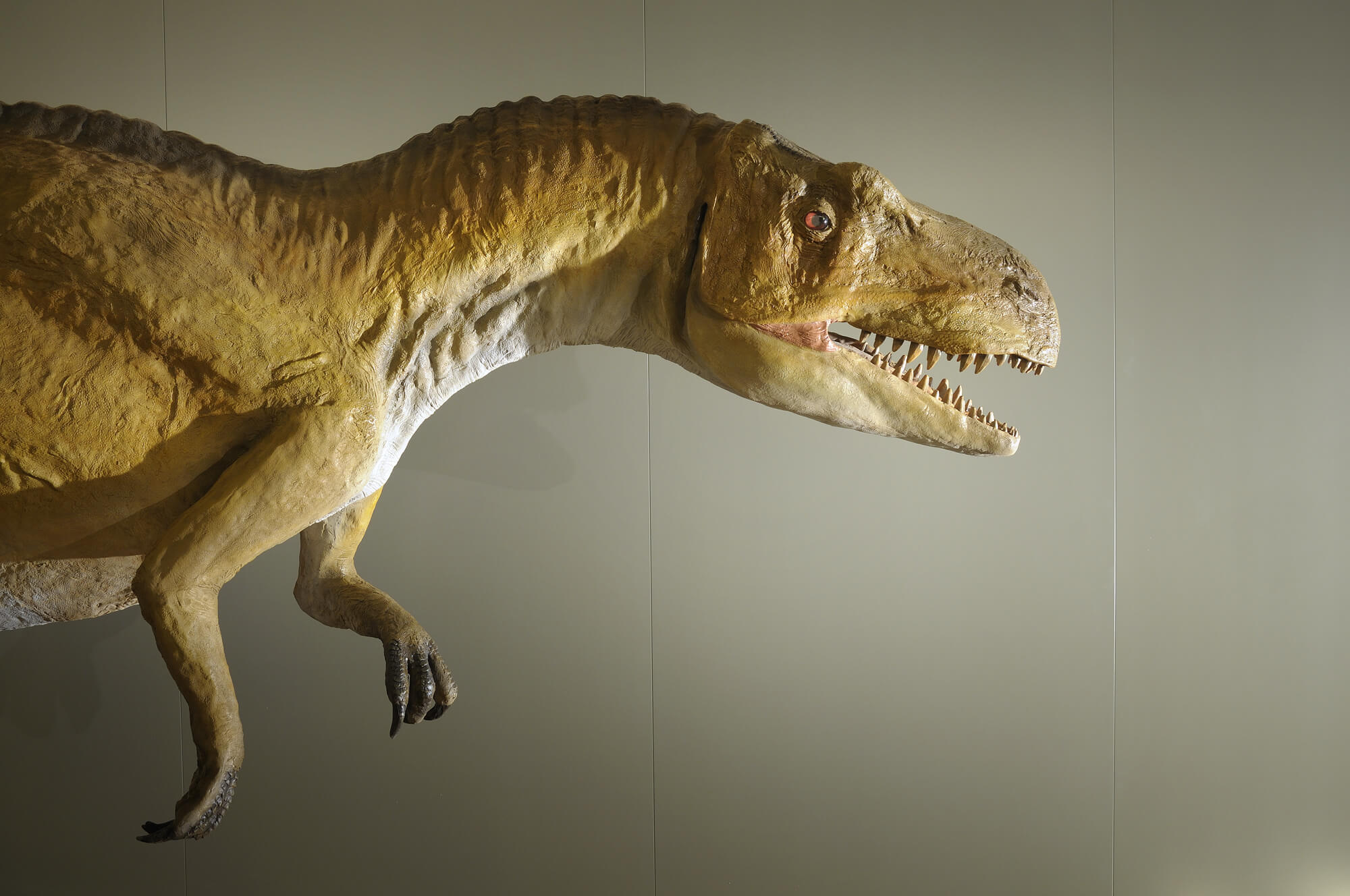
The Museum houses a rich collection of finds which allows the visitor to undertake a temporal journey around the history of the Cadore and Dolomite mountains, in its geological, paleontological, botanical and zoological aspects and the archaeological ones of which also in the municipality of Auronzo, in recent years, numerous testimonies from the Roman and pre-Roman era have come to light.
On the first floor there is a large stratigraphic series which illustrates the formation of the Dolomite rocks and which is integrated with the finds relating to the themes of water and soil. Some sections are totally dedicated to forest and high mountain environments, characterized by the presence of specific animals and plants. In these spaces, specimens of stuffed animals were put on display, such as the eagle, the owl, the fox, roe deer, vipers and numerous insects whose natural environment is documented by the photographic reproduction of meadows, woods, undergrowth, etc. with the typical flowers and the most peculiar plants and herbs.
On the second floor there is a good part of the archaeological finds coming from the excavations of some local sites and above all from that of Monte Calvario, where a sanctuary came to light, presumably used for military purposes, frequented starting from the 2nd Century AD. During the excavations, “ox skin” plates, simpula with handles with inscriptions, a small sacrificial altar in tuff, hooks and suspension rings, a bronze statuette and two chiselled and inscribed bronze discs were found.
The remains of the Calvary and its position so far north suggest the presence of an important transit route to cross the Alps. Finally, in the attic of Palazzo Corte Metto, numerous minerals of local and non-European origin are exposed which allow us to provide information on the mineralization processes and document the local exploitation of mines, especially zinc, lead and blende.

Not a museum, but a cultural space, this is how Algudnei was conceived and wanted a few years ago. The Comelico Superiore cultural research group association, which manages the Space, has collected a rich heritage of objects, films, paper documents and photographs of local interest in 30 activities, which were only partially exhibited in the installation of the Casa della Regola of Dosoledo, headquarters of the Group and of Algudnei.
The six themes, around which the visit itinerary revolves, are the Carnival, the Regoliera Institution, the Refabbrico the First World War in Comelico, the Ladin and the Clonpar. In the first section, a sequence of wooden faces characteristic of the Comelicese carnival found space, which well testify to a tradition and craftsmanship, that linked to woodworking, which is still alive. Suggestive and of strong visual impact are the life-size figures that document the masks characterizing the Comelicese carnival, which is held annually in Dosoledo: the Pagliaccio, the Lacché and the Matazin, the copy of the vecio and the bèla. They wear colorful clothes and wooden faces of particular expressiveness.
The historical and contemporary narration of the festive moment is entrusted to large photographs on the walls and film projections. The itinerary continues with a chronological account of what have been identified as the most important events in the centuries-old history of the Comelicese community, once again entrusting the focus on particular themes to photographs, films and maps: the land organization of the territory, the social organization, urban planning and architecture.
The fourth section recalls the First World War in Comelico. It presents the thickness of the front which includes Comelico Superiore, Sesto Pusteria and the Gail valley (Austria), a map illustrates the territory at the beginning of the 20th century and shows the infrastructures created by the military. Bilingual panels tell the story of war operations and films document the state of the population.
The last two sections were recently inaugurated and represent the Clonpar (tinsmiths) and the Ladin. The tinsmith: the work carried out until the last century by hundreds of people from Comelice who traveled throughout Italy and Europe in the pursuit of their activity. Gigantographies, small tools and films tell the story. And finally Ladin, the mother tongue of the valley, finds its most complete expression in this section, expressed in the different versions of each country. The visitor will be able to listen and read the Ladin texts included in the films and tablets.
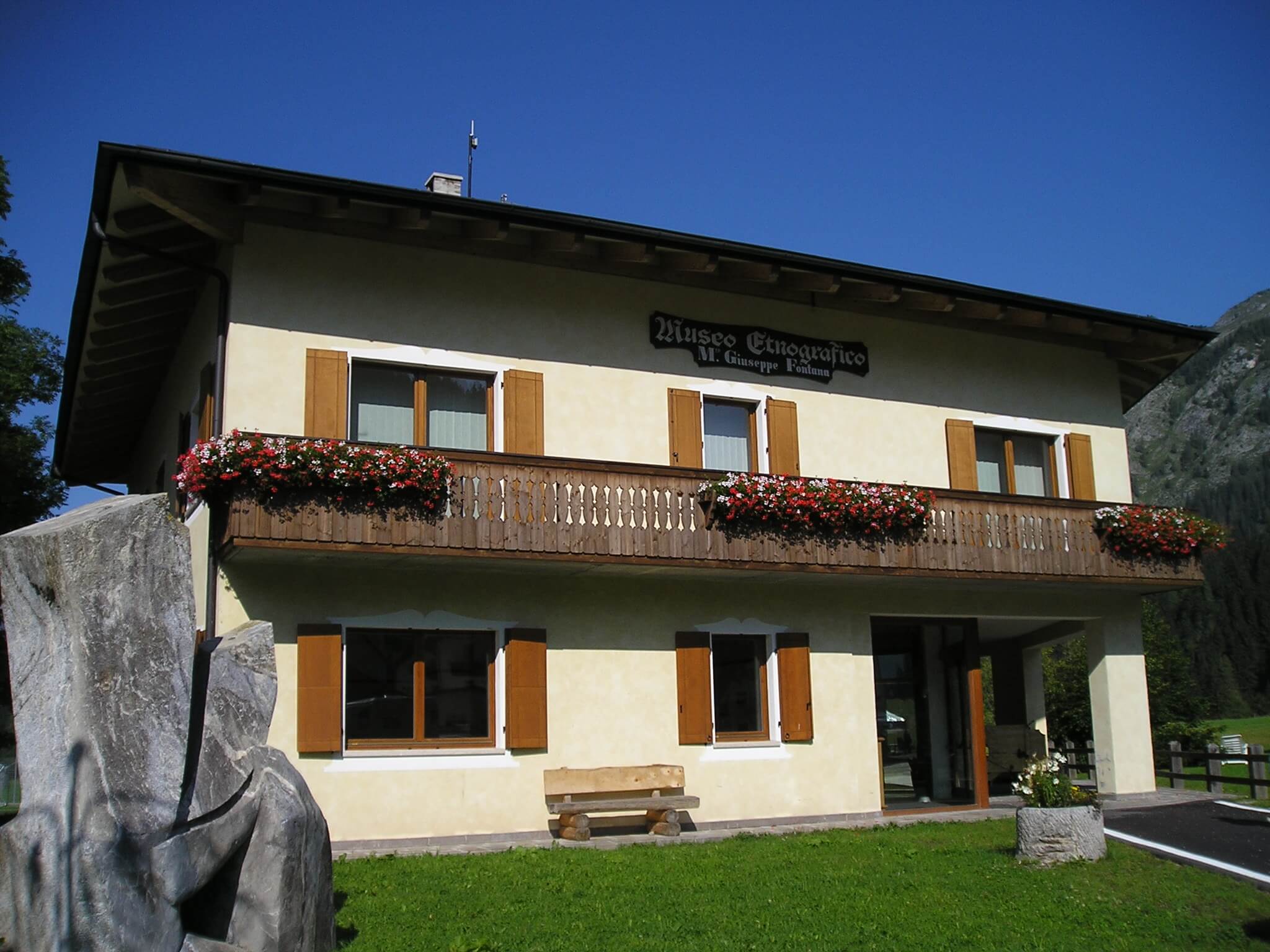
The most important nucleus of the rich and heterogeneous collection exhibited at the Ethnographic Museum in the Cima Sappada district is due to Giuseppe Fontana, master and enthusiast of local history and ethnography, who starting from the 1960s began collecting objects of popular culture for the purpose to witness a world and a lifestyle that were changing.
The first exhibition in 1972, by and by will of Fontana himself, constitutes the nucleus of the museum which, among the first of its kind in the province of Belluno, was named after him upon his death in 1975. Since then the collection has continuously been enriched of new objects and with the creation of a naturalistic-geological section, in the spirit of informing visitors of the environmental context in which the German-speaking community of Sappada/Plodn has settled.
The presence of forests and therefore the abundance of wood have allowed the development of a wood culture, which is evidenced along the visit route. The ethnographic narrative begins with the presentation of local history and architecture, where the use of wood prevails over any other material. Continuing you can see the reconstruction of the various rooms of the Sappada house, furnished with furniture and furnishings that cover a period of time ranging from the end of the nineteenth century until just over the middle of the following century.
There is also no shortage of men’s and women’s clothing and household linen, once kept in beautiful decorated trunks. Ample space is dedicated to traditional crafts and forestry, agricultural and livestock activities, fundamental for subsistence, even if not very profitable due to the harsh and sometimes extreme climatic conditions. Sleds, ploughs, baskets, hoes, rakes, buckets and milking stools tell of daily activities in the woods, fields and stables. The tools of the wheelwright, the blacksmith, the carpenter, the shoemaker and the weaver follow one another in the exhibition. At the center of the itinerary is the collection of sacred objects and furnishings, including those of a popular nature, which document the religiosity of the people of Sappada and the relationships with the neighboring Tyrolean-Carinthian lands and Carnia. The visit concludes with the wooden masks of the Sappada Carnival (vosenňcht), a tradition that is still alive, among which the austere figure of the Rollate stands out.
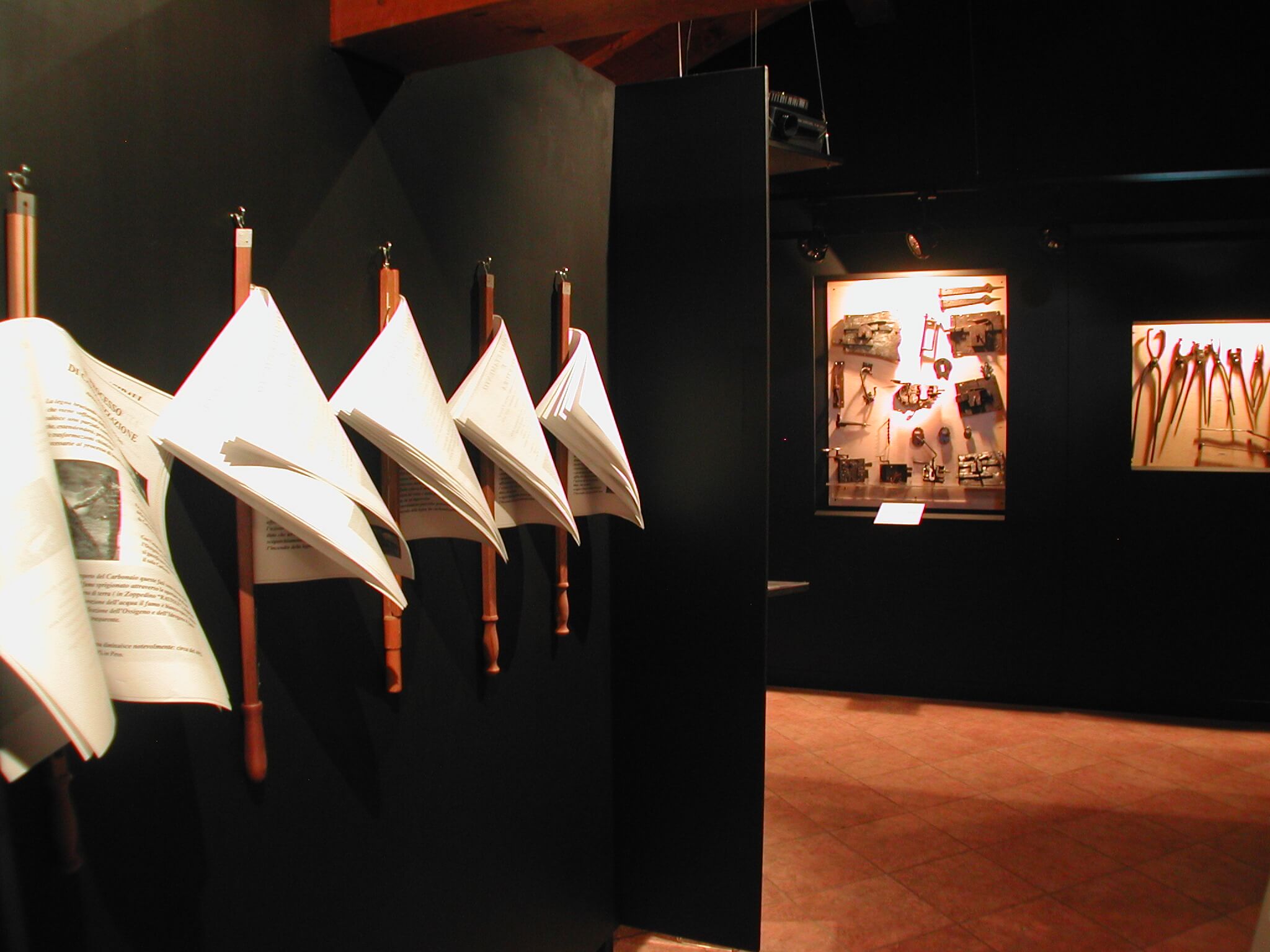
The museum collection consists of a repertoire of objects that well documents the local material culture of the small town of Zoppé di Cadore and the Cadore and Zoldo valleys. The most common work, craft and agro-forestry-pastoral activities in the area practiced until the mid-twentieth century are illustrated through tools and work tools and objects of everyday use.
These are mainly objects in wood and iron, often locally produced, also testifying to notable mastery and widespread artisan knowledge.
Among the professions to which the Museum gives particular attention are those linked to the exploitation of the forest, both in terms of place for the collection of firewood and timber and for the production and therefore marketing of coal.
In recent years, the collection of material and filmic-photographic evidence dedicated to this peculiar mountain activity has also been accompanied by an important animation and exchange activity with Italian and European groups and associations operating in the same field of interest.
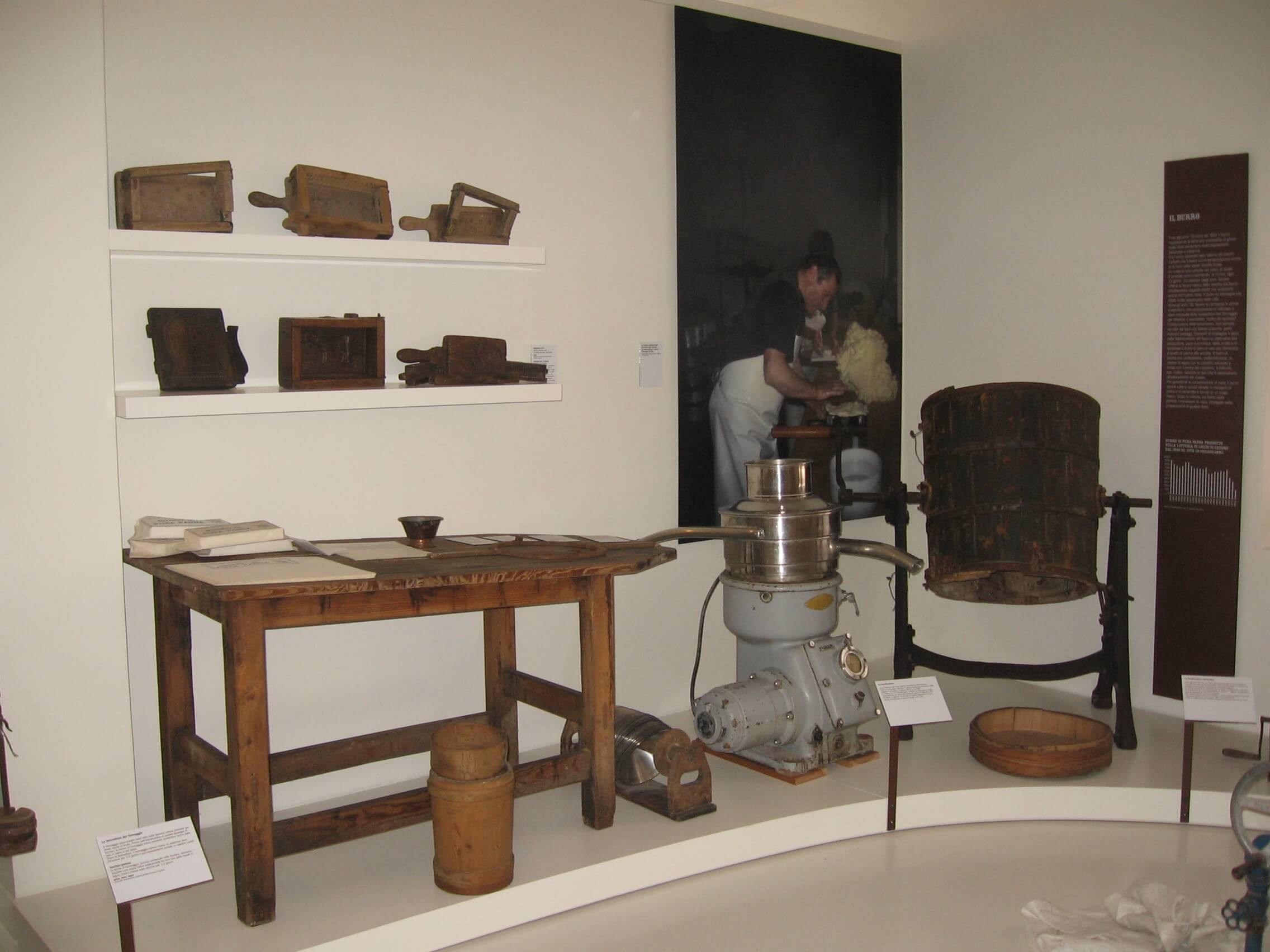
The Dairy Museum was reorganized in 2010 and opened to the public for the first time in 2001.
The exhibition is hosted in the former headquarters of the Lozzo di Cadore dairy, a building from the early 1960s, specially built by the members of the agricultural society.
The visit is divided into four main rooms where, in addition to numerous images, films and reproductions of archive documents, the collection of cheese-making tools preserved after the closure of the dairy in 1984 are on display.
In the building there is also part of the furnishings of the dairy, the long concrete fountain with running water in which the tanks full of milk for refrigeration were inserted; the scale for weighing milk; the wooden tables for working the butter and shaping the curd.
Of particular interest are the two large copper boilers in which the milk was heated with a steam system, no small innovation for a small dairy.
Alongside aluminum bands, ladles, moulds, curd crushers, there are also tools for domestic use or used in high mountain cheese-making. These are vases and balances for transporting milk, stools for milking, copper tubs for cooking milk over high heat and other objects.
The Museum also houses the internal paper archive of the Dairy, an important heritage for the reconstruction and understanding of the functioning of these institutions.
A large part of the museum collection was inventoried by the Veneto Region as part of the Interreg IV I-A Transmuseum project. The inventory can be consulted on the website www.lozzodicadore.org
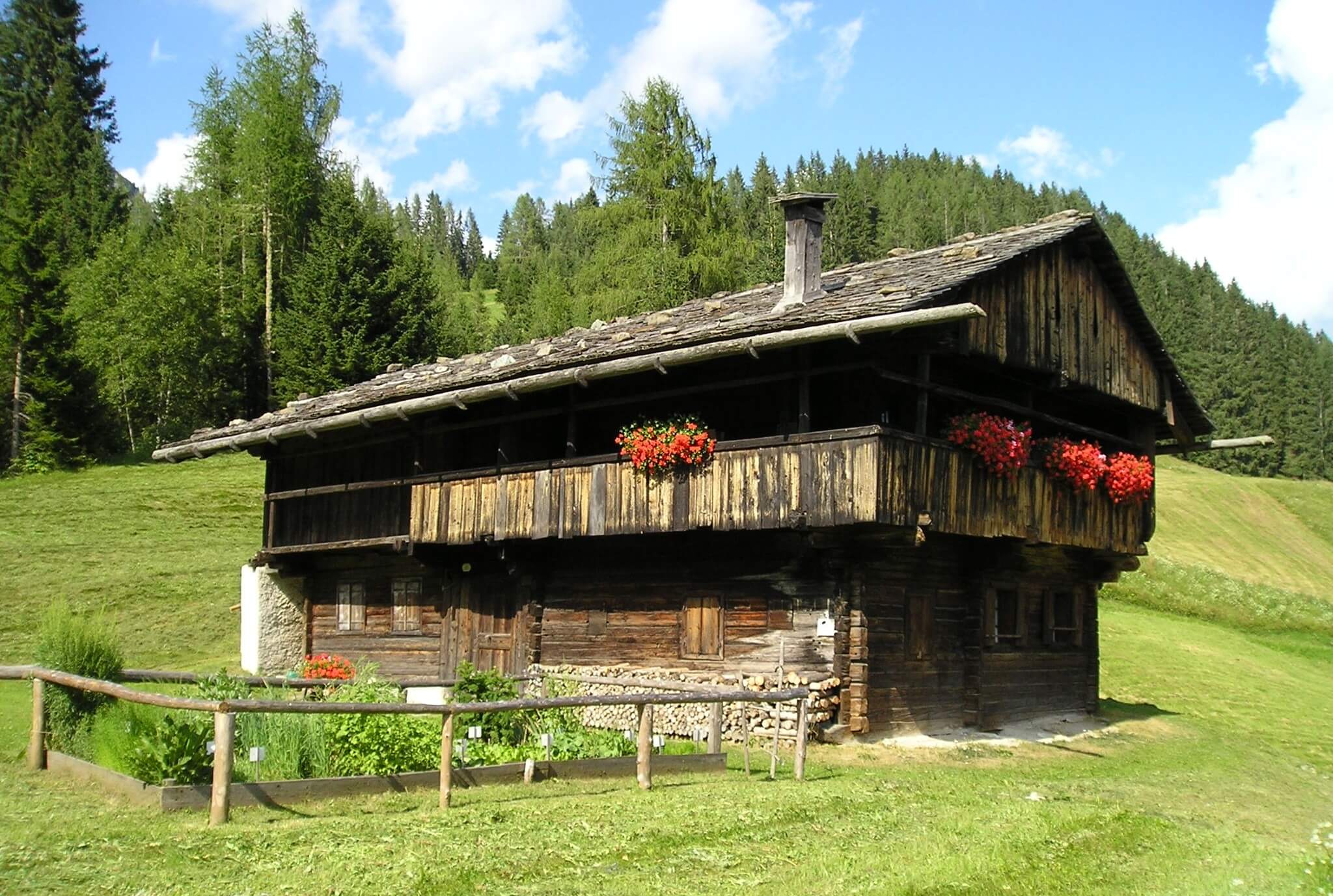
Purchased by the Municipality of Sappada in 1990, the Puicher s’Kottlars house was inhabited until the 1980s without undergoing major changes. After a careful conservative restoration, the building was opened to the public as an example of a typical Sappada house.
The house, which dates back to the second quarter of the 19th century, is on one floor and has the stable and barn attached. On the ground floor the corridor runs from east to west, connecting the kitchen, the dining room and a bedroom. The upper floor, reachable by an internal staircase, houses a second bedroom and a small workshop where repairs and small jobs were carried out.
The building is crossed on three sides by a gallery, on which there is also a free-fall toilet. The roof covering is entirely made of larch shingles. In the kitchen, blackened by the smoke from the open hearth, also used for smoking meat, numerous iron pans and a copper cauldron are on display, simple tools that testify to a rather simple diet.
In the dining room, with the walls lined in wood, there is the brick stove and the table on which the tools for embroidery, mending and sewing and making cloth shoes are displayed. Furnishings, personal accessories and some original items of clothing are preserved in the rooms. The exhibition itinerary ends with a view of the barn and the stable with the tools used in agricultural work.
A small vegetable garden is cultivated next to the house where, for example, some plants among those once grown on site are sown: flax, barley, rye, oats, broad beans, potatoes, turnips, caps, horseradish, chives, watercress, etc. . In one corner there is no shortage of aromatic herbs such as absinthe, oregano, mint and tarragon, a fundamental ingredient for seasoning the so-called Sappada “sour ricotta”.
